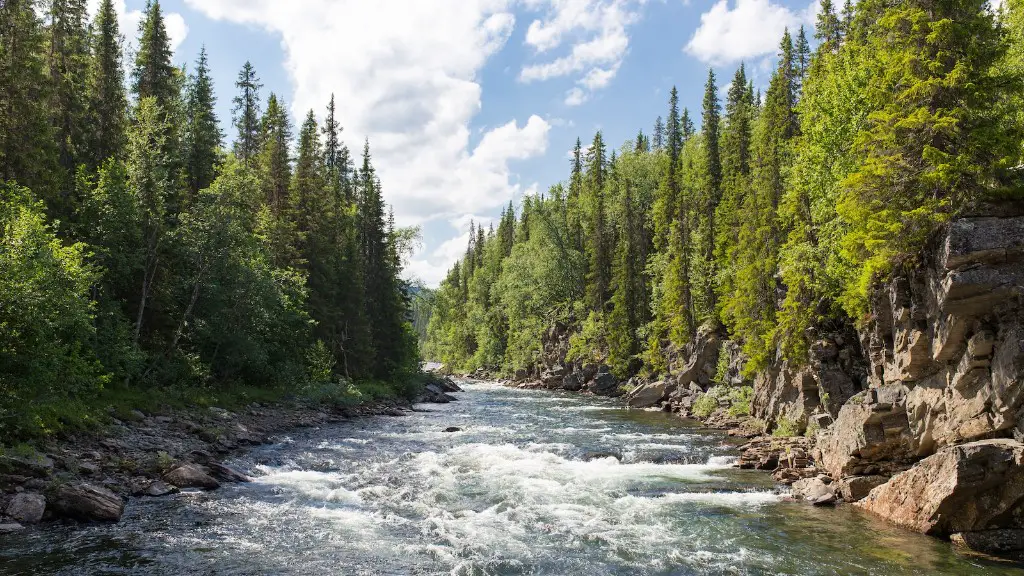What is the Yangtze River Delta
The Yangtze River Delta is a geographical area in China located at the junction of the Yangtze River and the East China Sea. The delta, sometimes referred to as the “sunshine coast” due to its warm climate, is an important region of Eastern China and one of the most densely populated areas on the planet with over 120 million people. The typical terrain within the delta is flat, except in the Qingliang Mountains located at the junction of the Jiangsu and Anhui provinces. The area is renowned for its many cultural attractions, natural beauty and industries.
The Yangtze Delta region covers approximately 70,000 square miles of coastal areas and spreads across seven provinces, including Shanghai. It is an important hub for trade, culture, and transportation in East Asia, boasting one of the world’s busiest ports – the Port of Shanghai, which is located in the middle of the delta. The Yangtze Delta is densely populated with a large middle class, making it an attractive place for business and investment.
The Yangtze River Delta is one of the most prosperous areas in China and has long served as a gateway for trade and other economic activities due to its strategic location. It has grown rapidly in the past few decades to become a major hub for financial activity, industrial manufacturing, and technology innovation, with a significant number of Fortune 500 companies based in the region.
The combination of the Yangtze River Delta’s rich cultural heritage, developing economy, and abundance of natural resources make it well-positioned to be a major player in the 21st century global marketplace. As such, the region has become a hotspot for foreign investment and a key driver of China’s economic growth.
Geography of the Yangtze Delta
Situated on the East China Sea, the Yangtze Delta region has many cultural and spatial characteristics that distinguish it from other regions in China. The flat low-lying landscape of the delta is in contrast to the rugged mountains of the western part of the country and the hilly regions of the south. Its vast commercial capital, Shanghai, is located in the center of the delta.
The delta is home to many rivers and canals that form circles of water around several large and small islands. The Yangtze River, which snakes through the delta, is the third-longest in the world and is a major shipping route for commerce in the region. The islands of Chongming, Hengsha, and Changxing are all part of the delta and feature unique landscapes and ecosystems.
The nutrient-rich silt and estuarine environment, along with the cold and warm currents of the East China Sea, make the Yangtze Delta an ideal habitat for a diverse ecosystem. There are numerous protected areas, such as the Shanghai Pudong Nature Reserve, the Chongming Dongtan Natural Reserve, and the SubeiNational Nature Reserve, that are home to rare species, such as Chinese bonnet head dolphins, oriental white storks, and red-crowned crane.
The fertile soils of the delta combined with the region’s mild climate and ample rain have made it an agricultural powerhouse, with rice, maize, vegetables, and fruits being grown in abundance. The region is also rich in minerals and metals, such as copper, nickel, and iron ore, and has significant energy resources in the form of oil, natural gas, and coal.
Industry and Infrastructure
The Yangtze Delta has been a major industrial hub since the 1980s and has attracted manufacturers across a variety of sectors, such as automotive, electronics and information technology, and food and beverage production. The region is home to many world-renowned corporations, such as Foxconn, Lenovo, and Huawei, and has experienced some of the most rapid economic growth in China.
The Yangtze Delta is also home to a number of state-of-the-art transportation networks and infrastructure projects. The Yangtze River Delta Port and Logistics Network consists of six hubs interconnected by expressways, railroads, and navigable channels. The network has improved regional logistics, reducing travel time between cities and increasing the efficiency of cargo transport.
The area is also served by three airports – Pudong International Airport, the Hongqiao International Airport, and Shanghai Disneyland Resort – that provide domestic and international flights. Additionally, the Shanghai Maglev Train and the Hangzhou Bay Bridge connect the cities of Shanghai and Hangzhou and provide access to the region’s attractions.
Cultural Highlights
The Yangtze Delta is a region steeped in culture and tradition. The cosmopolitan Shanghai is home to major tourist attractions, such as the Bund, Yu Garden, and the Shanghai World Financial Center. Additionally, the delta is renowned for its beautiful landscapes, including the Hangzhou West Lake, Suzhou Classical Gardens, and the waterways of Hangzhou.
The delta is also home to many ancient temples and religious attractions, such as the Lingyin Temple and the Tianning Temple. Additionally, it offers countless opportunities for exploration of its unique cultural heritage, including visits to its many museums and art galleries.
Conclusion
The Yangtze River Delta is one of the most vibrant and prosperous economic regions in China. It offers an abundance of cultural, economic, and natural attractions, making it an attractive destination for tourists and business travelers alike. A visit to the Yangtze Delta is sure to provide a memorable experience of its diverse culture, stunning beauty, and bustling economy.



